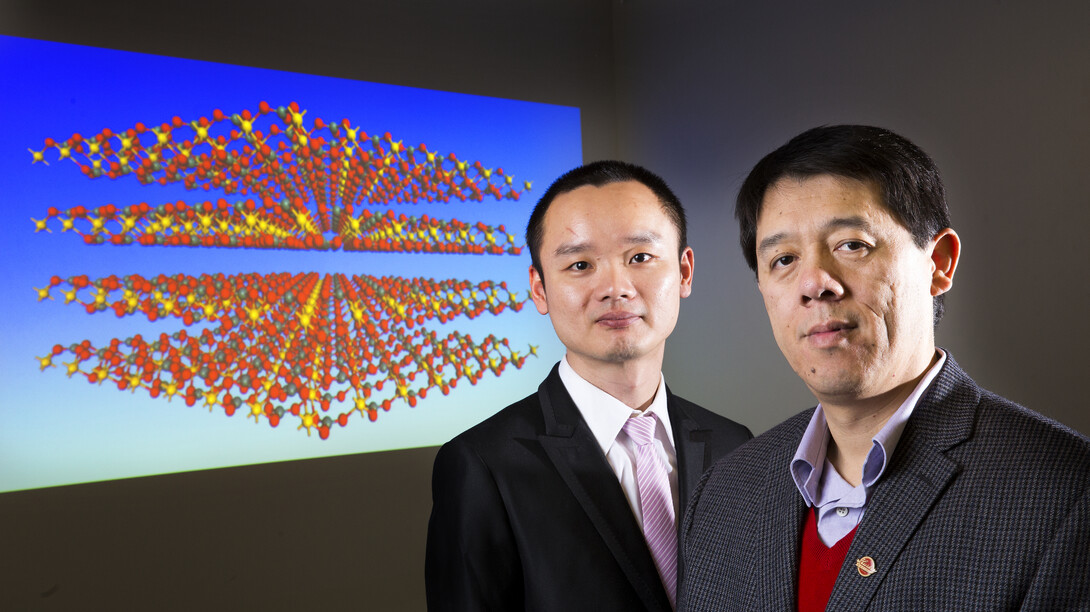
Research led by UNL chemist Xiao Cheng Zeng has uncovered a new material that could have significant implications for a variety of challenges, from carbon dioxide storage to planetary science and solid lubrication.
At first glance, there wouldn’t seem to be much of a connection between dry ice and quartz. But in scientific terms, they are actually quite close as they are oxides of the first two elements in a chemical group in the periodic table (Group IV) — carbon for dry ice (frozen carbon dioxide) and silicon for quartz.
In 2011, European researchers announced the discovery of a new substance called silicon carbonate when they combined dry ice and silicon dioxide (quartz) under high pressure. They were unable to determine the material’s crystal structure, however, and the question caught the attention of Zeng and his colleagues, who took up the challenge and spent almost a year in modeling possible structures on the University of Nebraska’s Holland Computing Center supercomputer.
“We did an exhaustive search of possible solid structures for a given ratio of carbon dioxide and silicon dioxide,” said Zeng, Ameritas University Professor of chemistry. “We did an extensive structure search of thousands of crystal structures before we identified one highly stable one.”
That highly stable form, Zeng said, consists of one silicon atom, two carbon atoms and six oxygen atoms, or SiC2O6. The result was reported in the Feb. 27 issue of Physical Review X, the highly selective, online-only, fully open-access journal of the American Physical Society. It is the first time UNL research has been published in the three-year-old journal.
“One of the potential applications is carbon dioxide storage,” Zeng said. “We predict that under high pressure, about 200,000 atmospheres, carbon dioxide can combine with silicon dioxide to form a new crystal form that is a possible sequestration form.
“This solid is somewhere between dry ice and quartz, and in the past, people didn’t imagine that there was something in between. Something in the middle is very hard for chemists to imagine, but we provide a candidate for something in the middle.”
Zeng said the predicted crystal may also provide an important clue to the makeup of terrestrial planets and satellites since silicon dioxide and carbon dioxide in its gaseous and frozen forms are common components of those bodies.
With a layered structure similar to graphite, the silicon carbonate crystal also has potential as a solid lubricant.
“The structure we saw is a three-layered structure where the middle layer is silicon,” he said. “The layers can slip and shear, making it a good solid lubricant.”
Zeng’s collaborators on the project were Rulong Zhou, a former postdoctoral researcher in Zeng’s lab at UNL and now the chair of the physics department at the Hefei (China) University of Technology; Bingyan Qu at Hefei University of Technology; and Jun Dai, a current postdoctoral researcher with Zeng.
The research was supported with funding from the Army Research Office and UNL’s Materials Research Science and Engineering Center and Nebraska Center for Energy Sciences Research.







